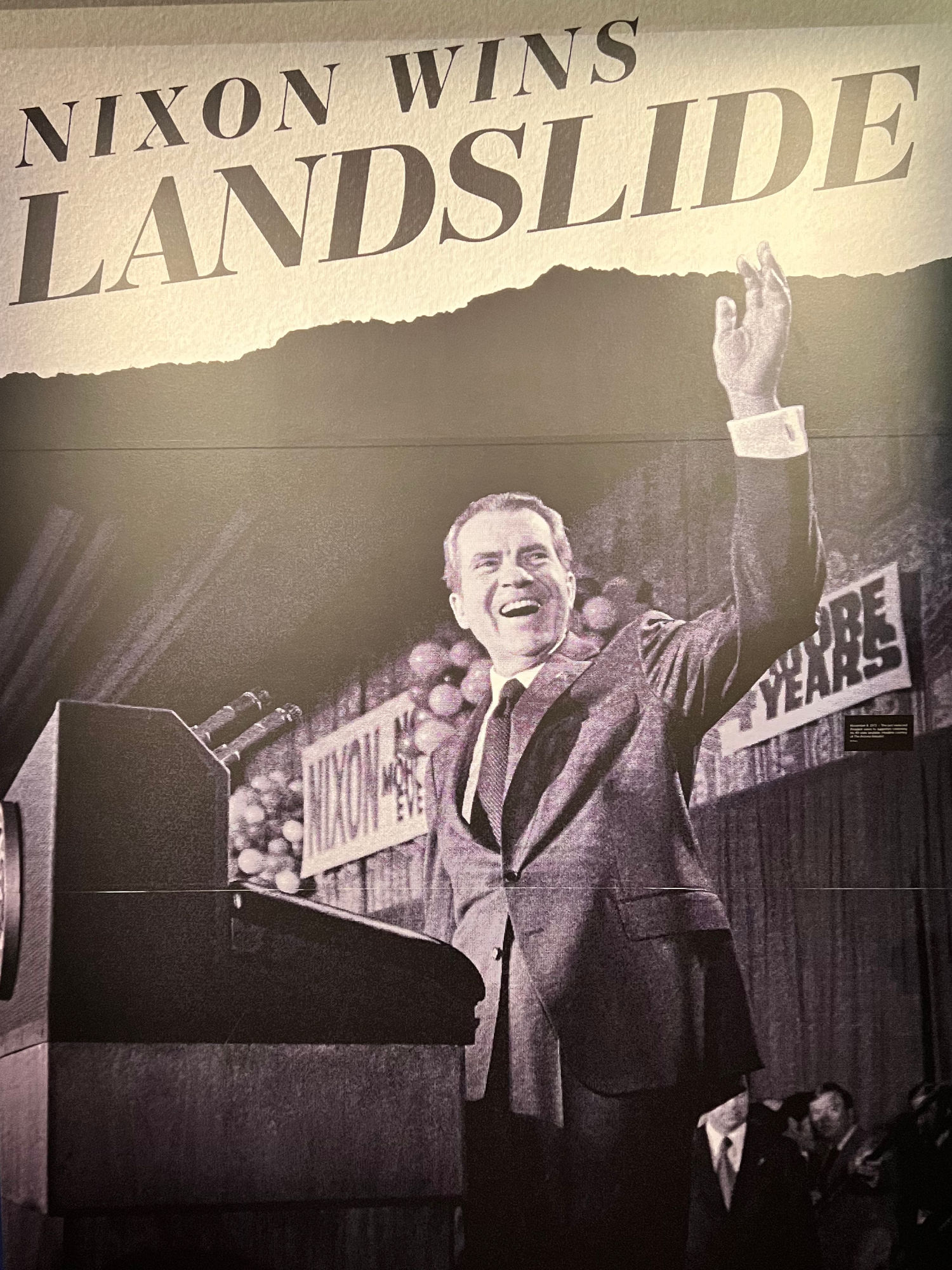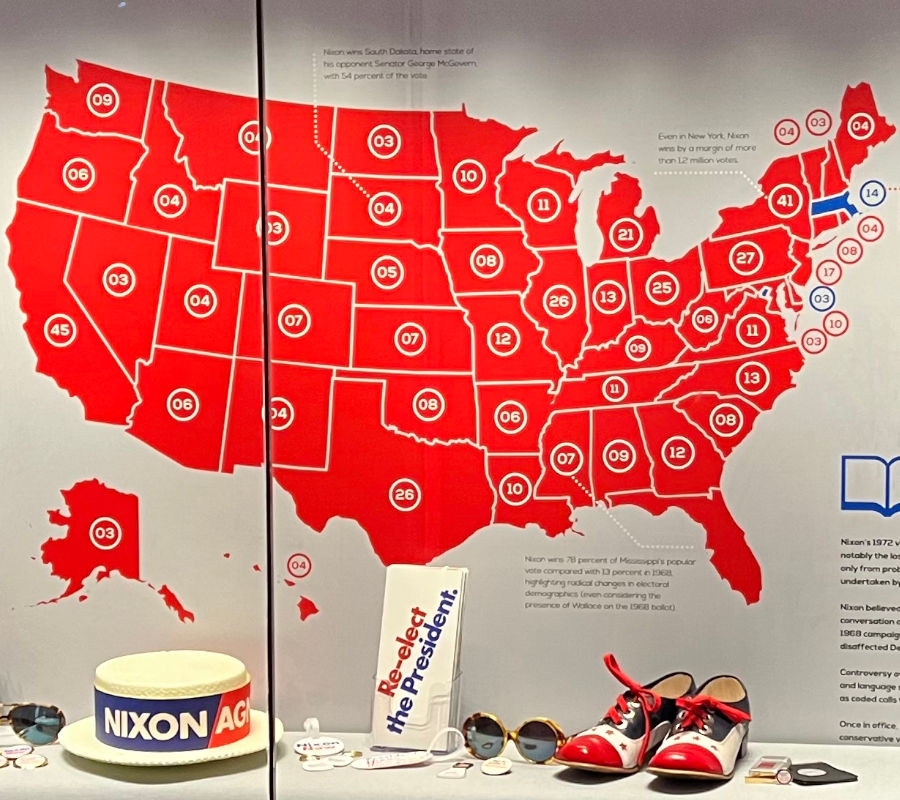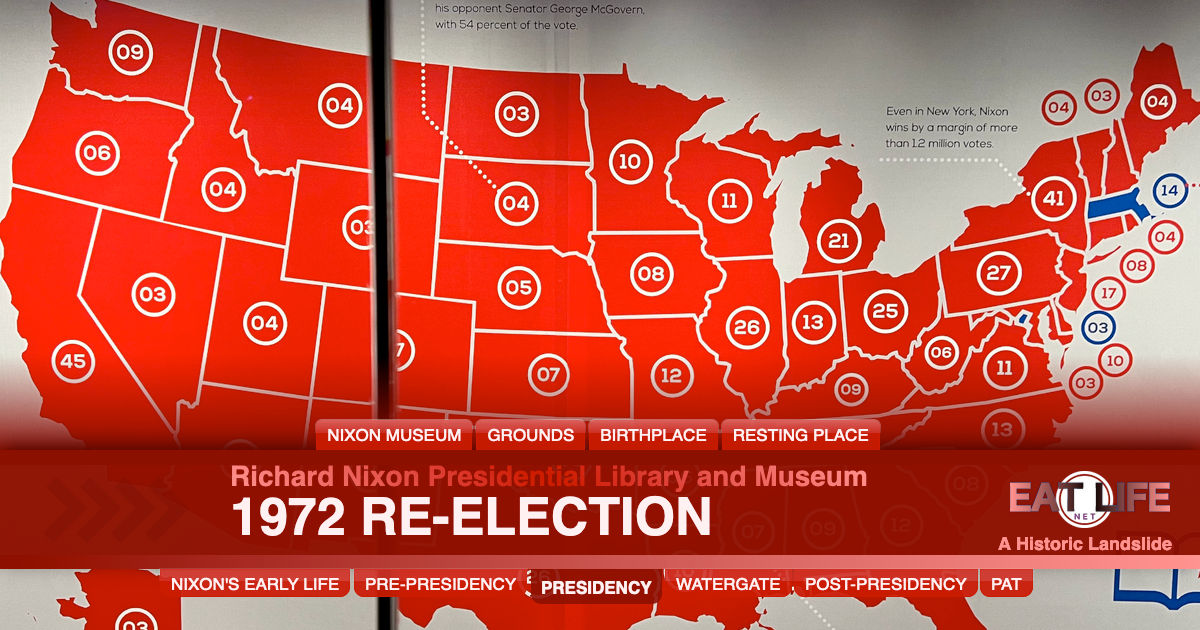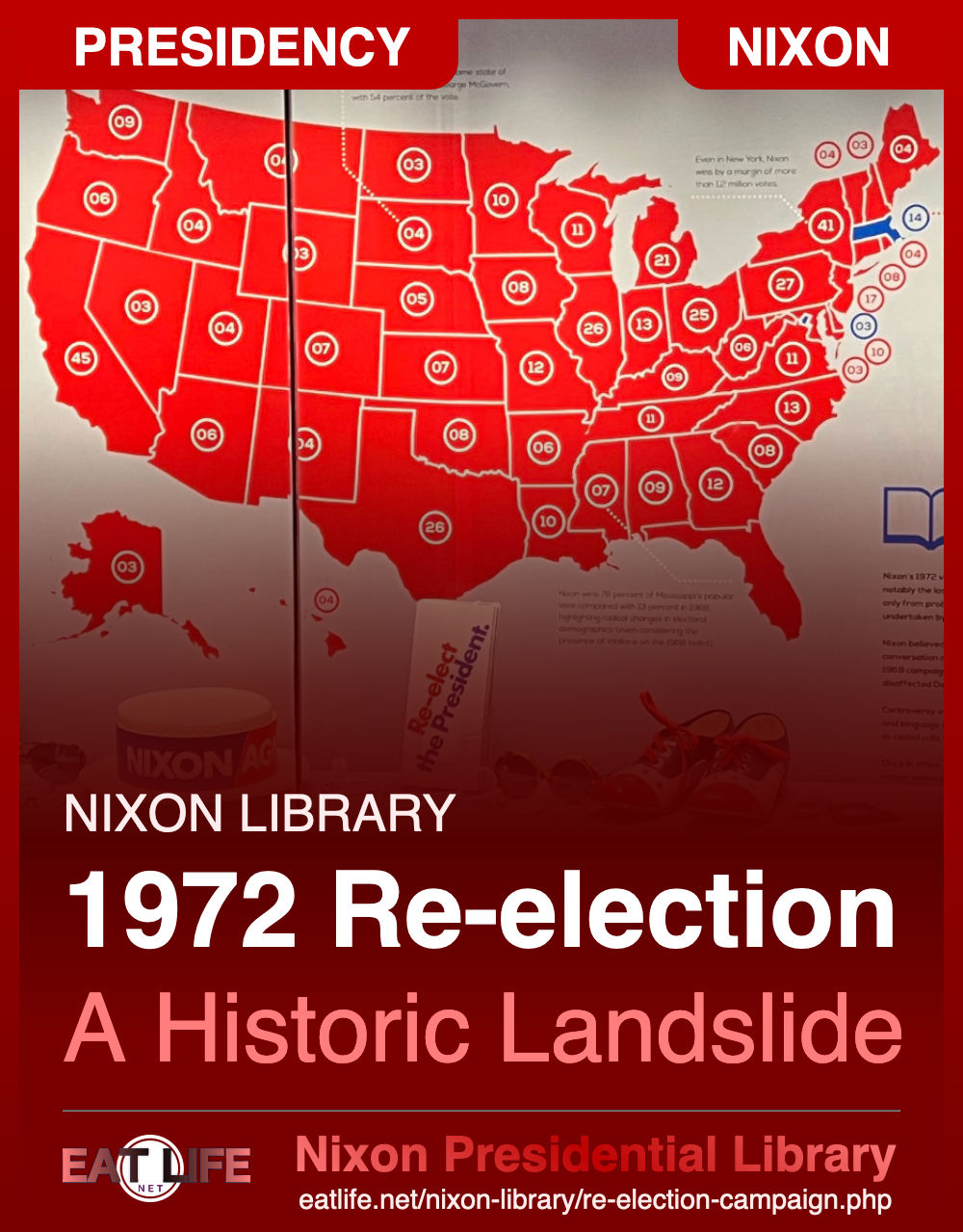As a result, President Nixon was riding high in the polls throughout the year, and he was easily renominated on the first ballot at the Republican National Convention.
The divisions that had disrupted the Democratic Party in 1968 still existed, and the Democrats continued to fight among themselves. They finally settled on South Dakota Senator George McGovern. McGovern was the farthest left of all the Democratic contenders and ran as an anti-war candidate.
The Vietnam War was the election's central issue. Many Americans, while disappointed that it was not over, felt that Nixon's policies had hastened its end and that he was trying to achieve an honorable peace. By 1972, the President had recalled half a million American troops from Vietnam, a move seen by many as a promise kept. The ending of the draft helped mitigate some of the anti-war protests. And the peace negotiations in Paris seemed finally about to bear fruit.
- When Election Day arrived, Nixon amassed one of the biggest landslides in American history, winning more than 60 percent of the vote and capturing 49 of the 50 states.
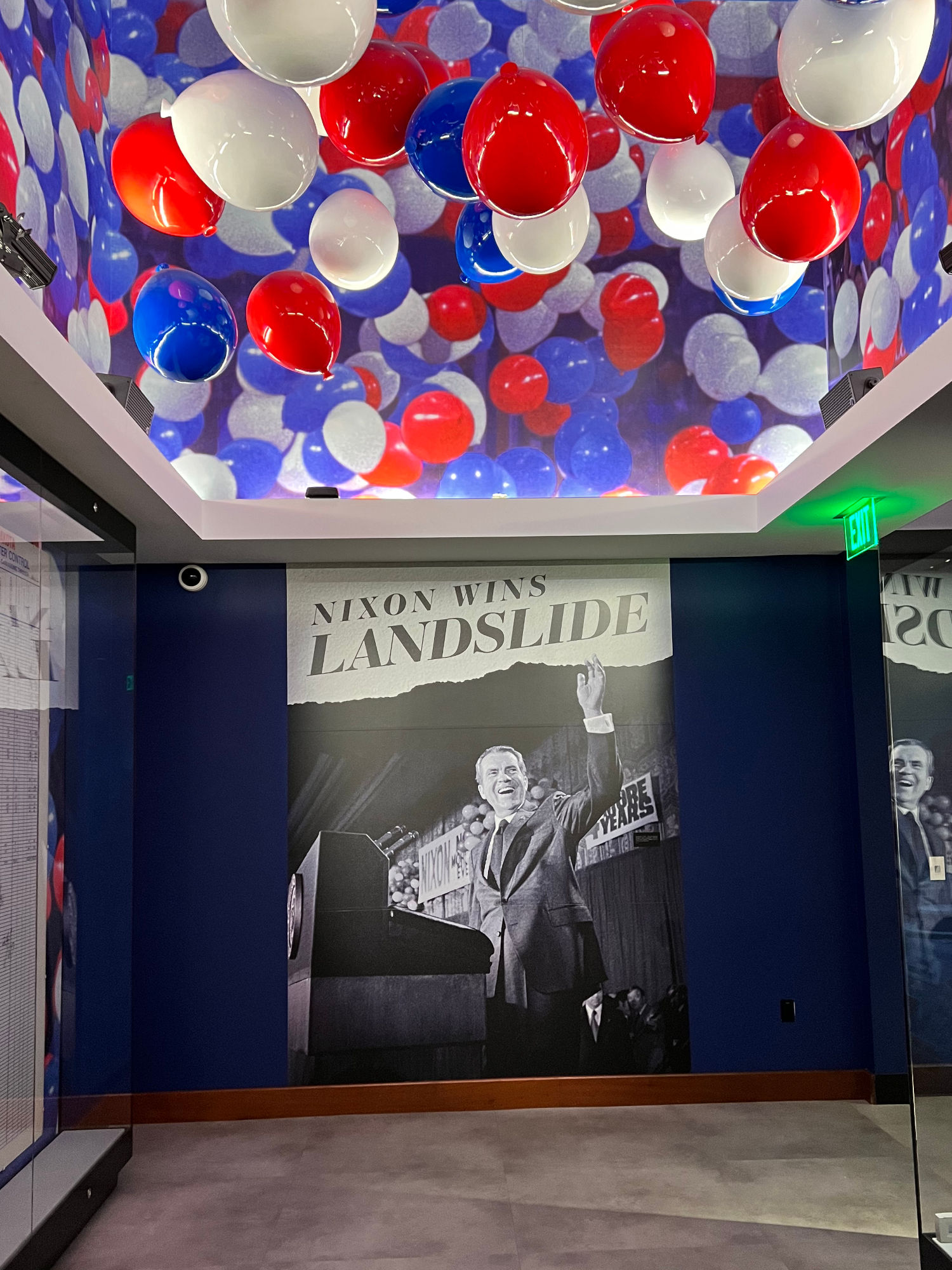
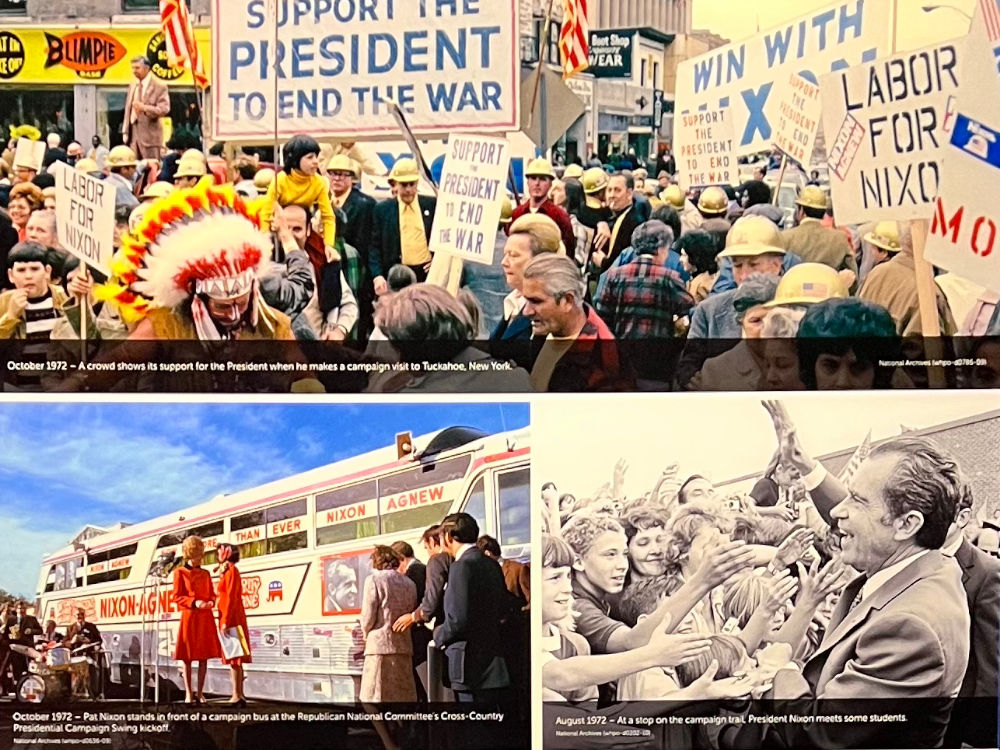
- October 1972
A crowd shows its support for the President when he makes a campaign visit to Tuckahoe, New York. - October 1972
Pat Nixon stands in front of a campaign bus at the Republican National Committee's Cross-Country Presidential Campaign Swing kickoff. - August 1972
At a stop on the campaign trail, President Nixon meets some students.
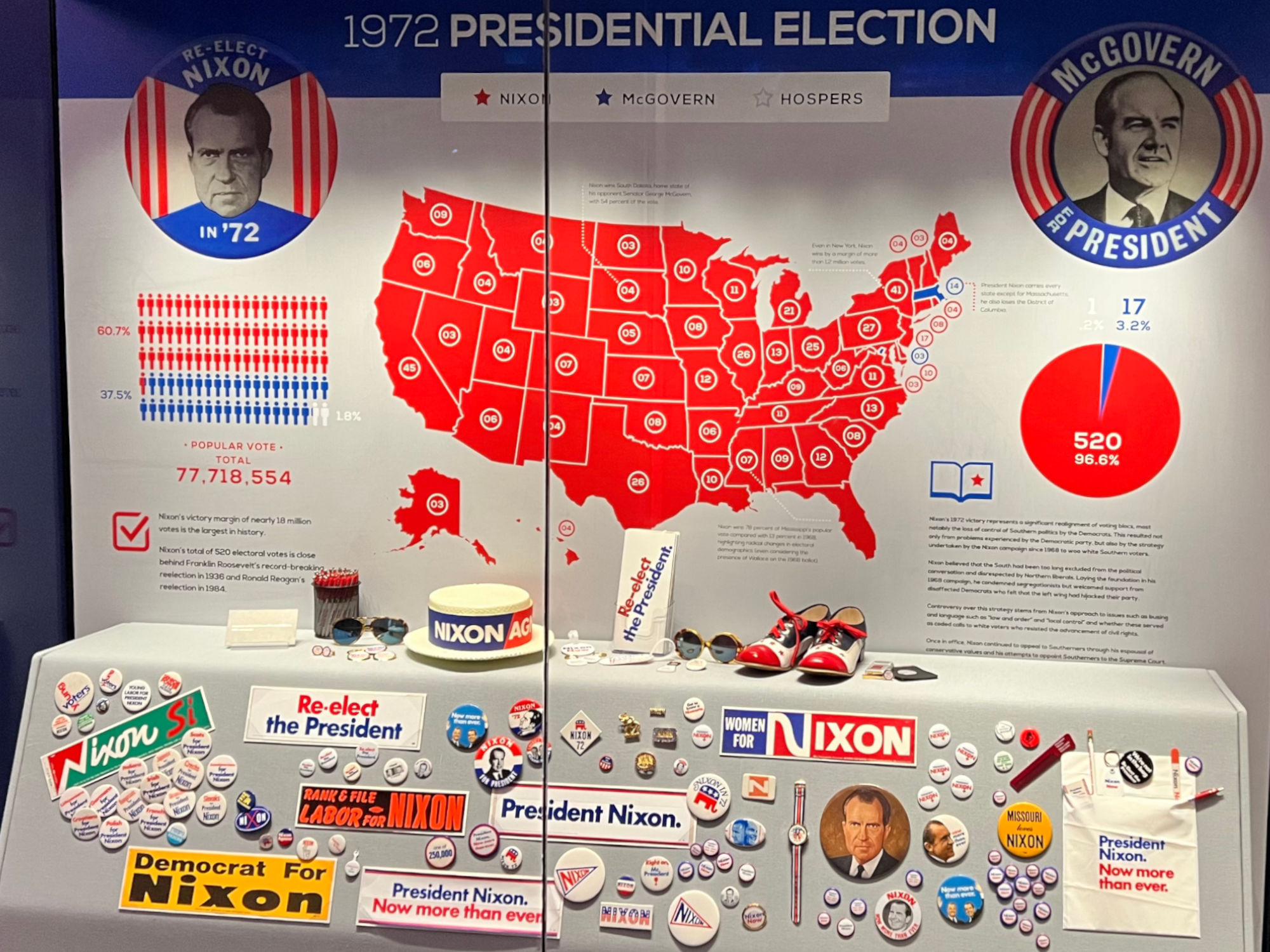
- Nixon's victory margin of nearly 18 million votes is the largest in history.
- Nixon's total of 520 electoral votes is close behind Franklin Roosevelt's record-breakin reelection in 1936 and Ronald Reagan's reelection in 1984.
- Nixon wins South Dakota, home state of his opponent Senator George McGovern with 54 percent of the vote.
- Even in New York, Nixon wins by a margin of more than 1.2 million votes.
- Nixon wins 78 percent of Mississippi's popular vote compared with 13 percent in electoral demographics (even considering the presence of Wallace on the 1968 ballot).
- President Nixon carries every state except for Massachusettes, he also loses the District of Columbia.
Nixon's 1972 victory represents a significant realignment of voting blocs, most notably the loss of control of Southern politics by the Democrats. This resulted not only from problems experienced by the Democratic party, but also by the strategy undertaken by the Nixon campaign since 1968 to woo white Southern voters.
Nixon believed that the South had been too long excluded from the political conversation and disrespected by Northern liberals. Laying the foundation in his 1968 campaign, he condemned segregationists but welcomed support from disaffected Democrats who felt that the left wing had hijacked their party.
Controversy over this strategy stems from Nixon's approach to issues such as busing and language such as "law and order" and "local control" and whether these served as coded calls to white voters who resisted the advancement of civil rights.
Once in office, Nixon continued to appeal to Southerners through his espousal of conservative values and his attempts to appoint Southerners to the Supreme Court.
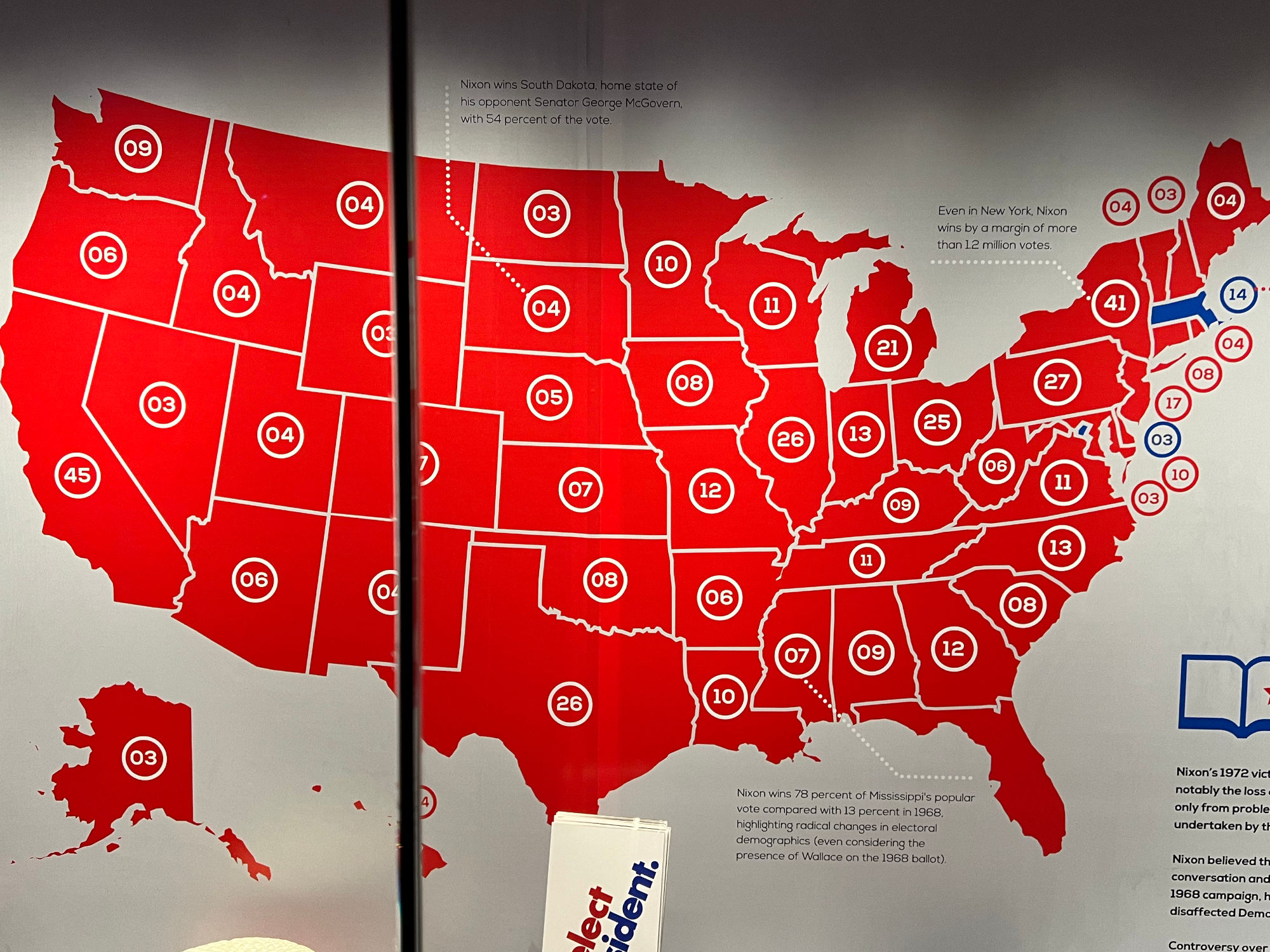
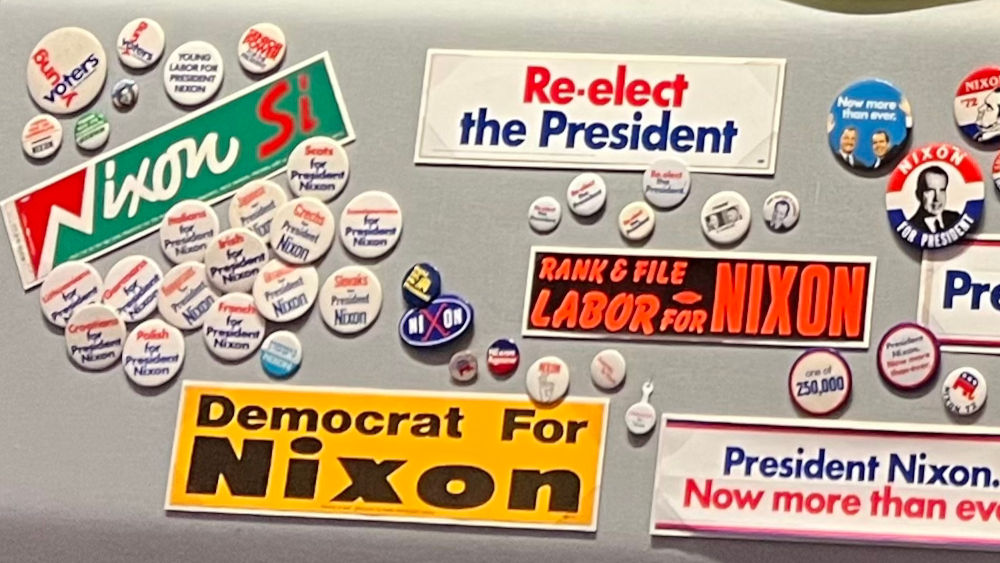
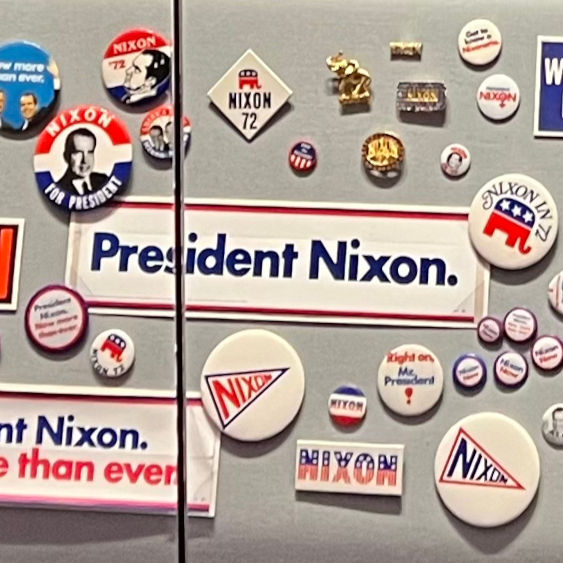
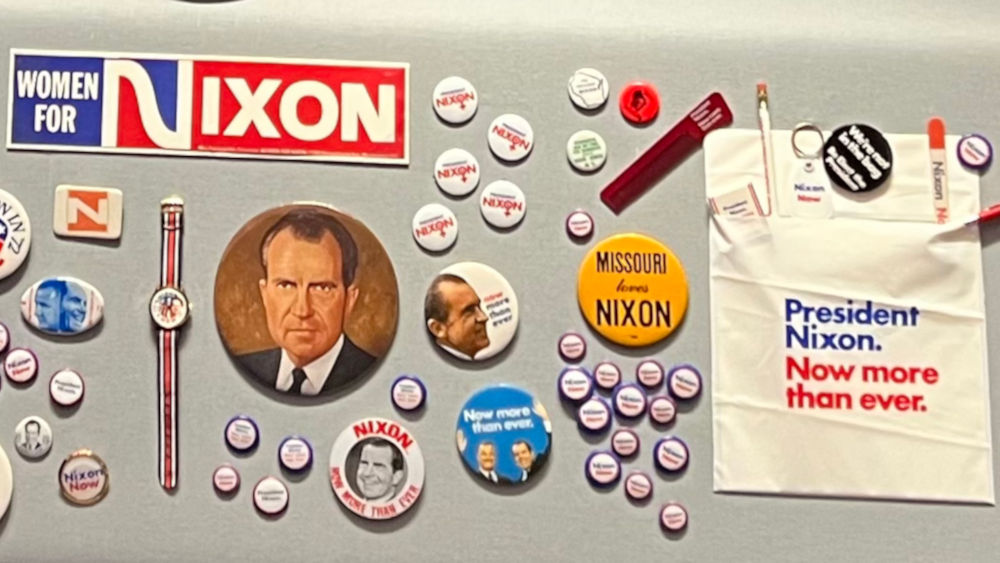
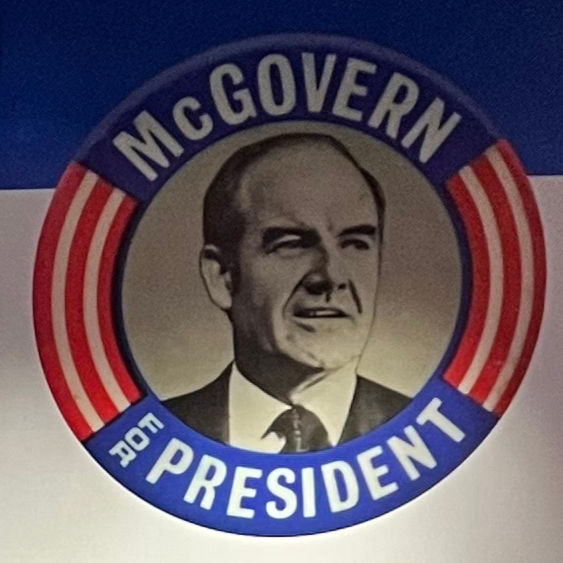
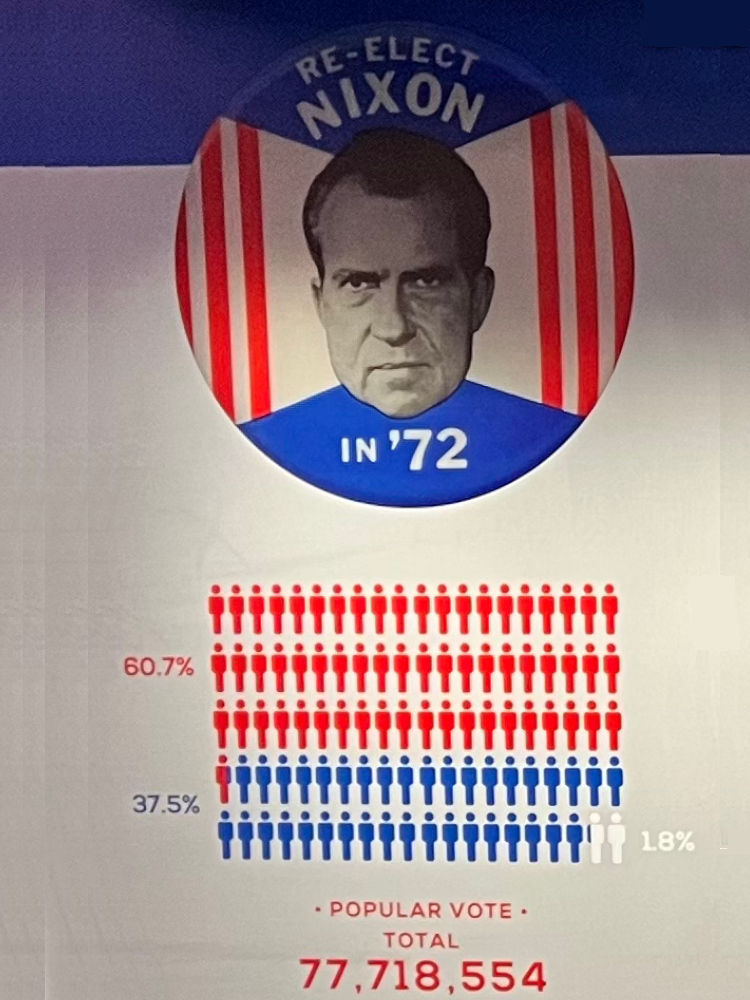
- Nixon 60.7%
- McGovern 37.5%
- Hospers 1.8%
- Total 77,718,554
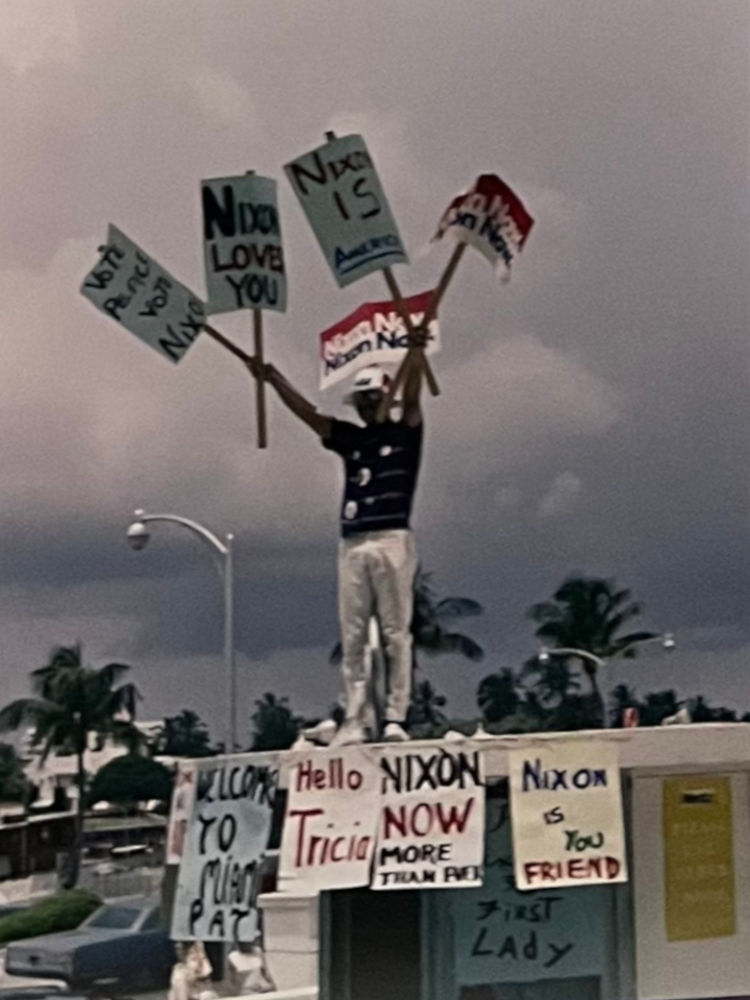
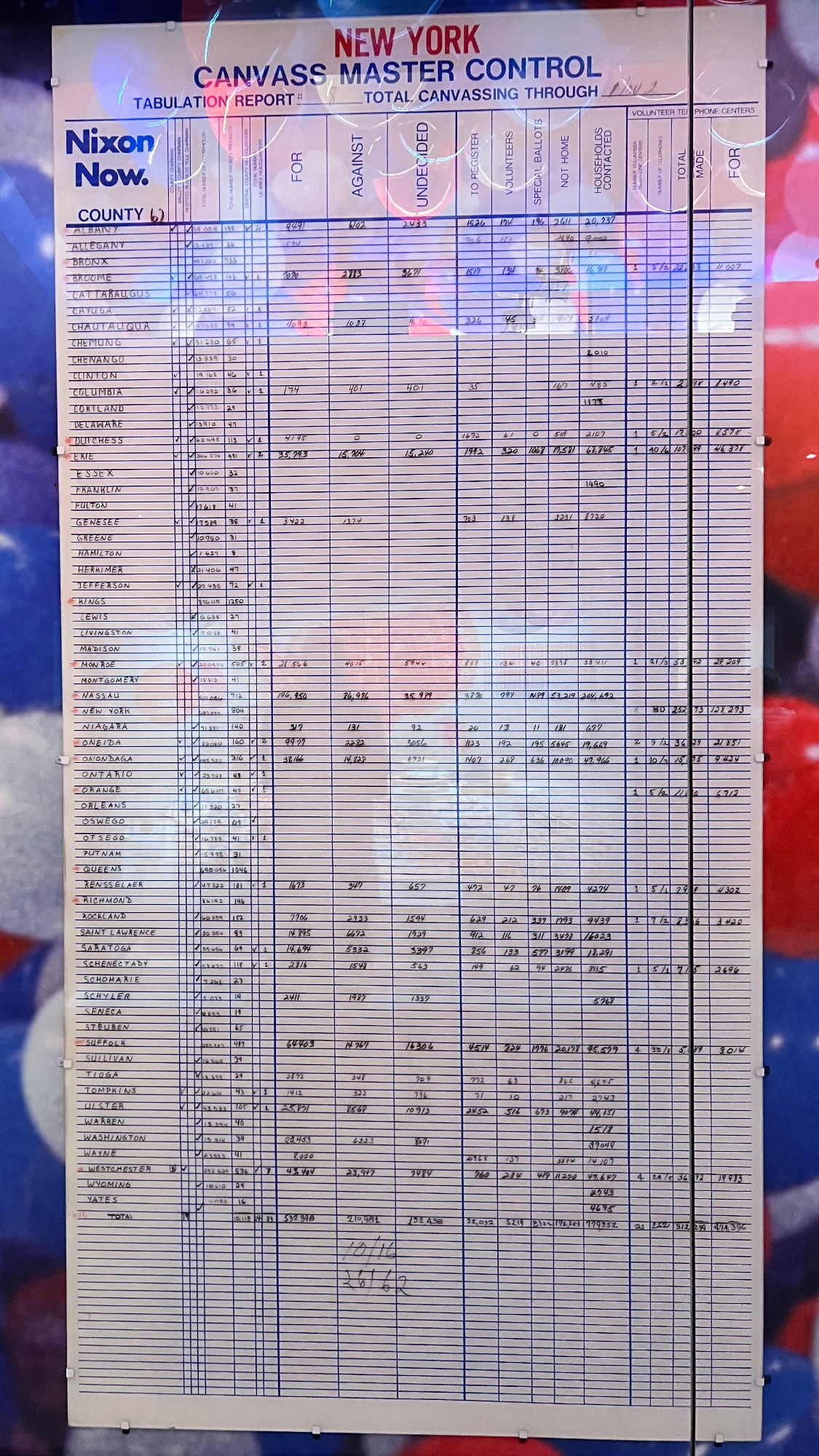
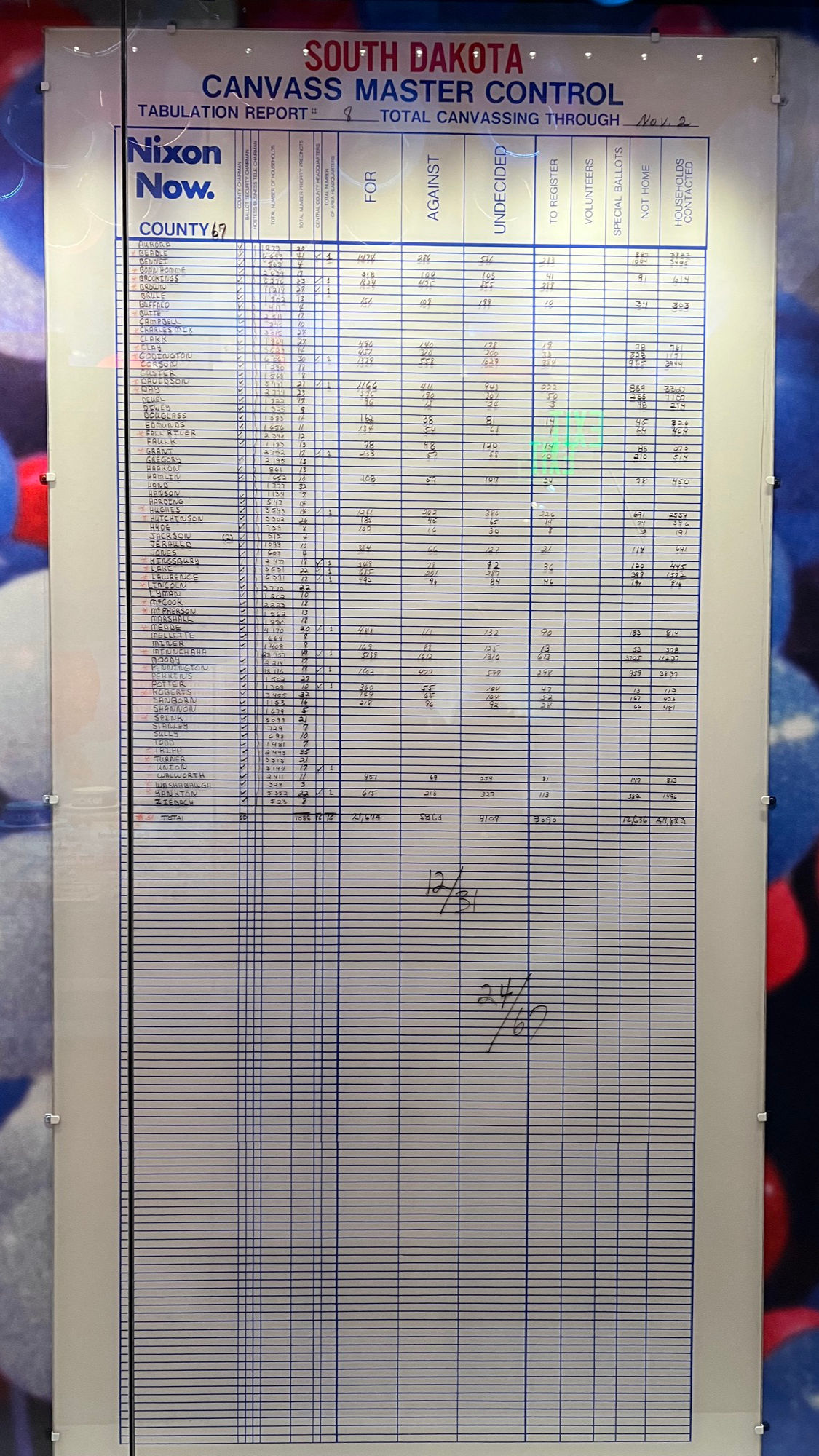

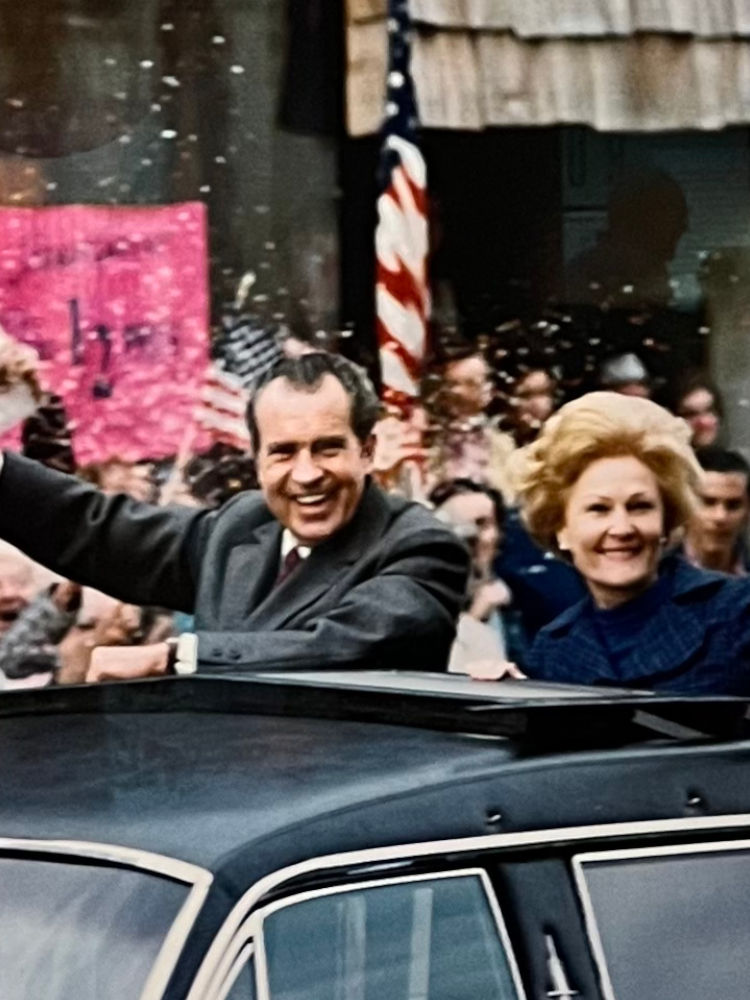

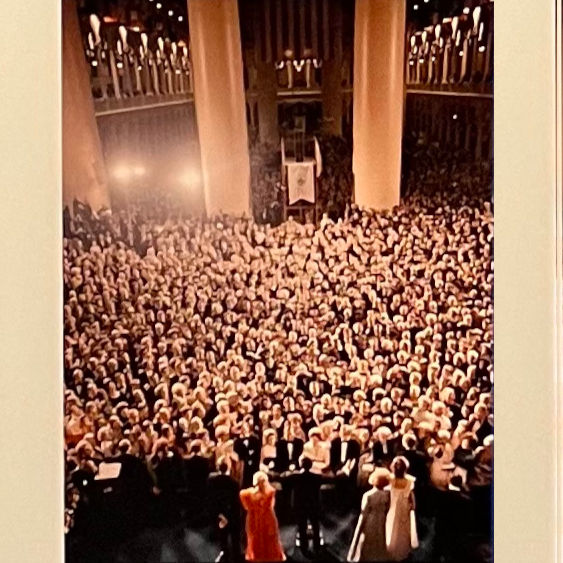
President Nixon and the First Family welcome the guests at the Inaugural Ball held in the hall of the historic Pension Bureau building in Washington.
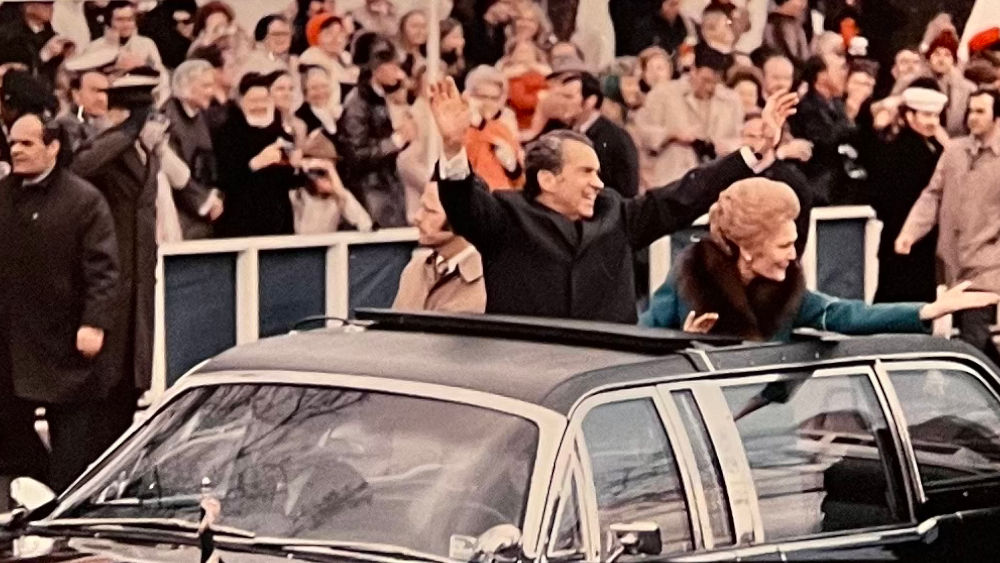
- President Nixon and the First Lady wave from the back of a limousine in the inaugural parade.

